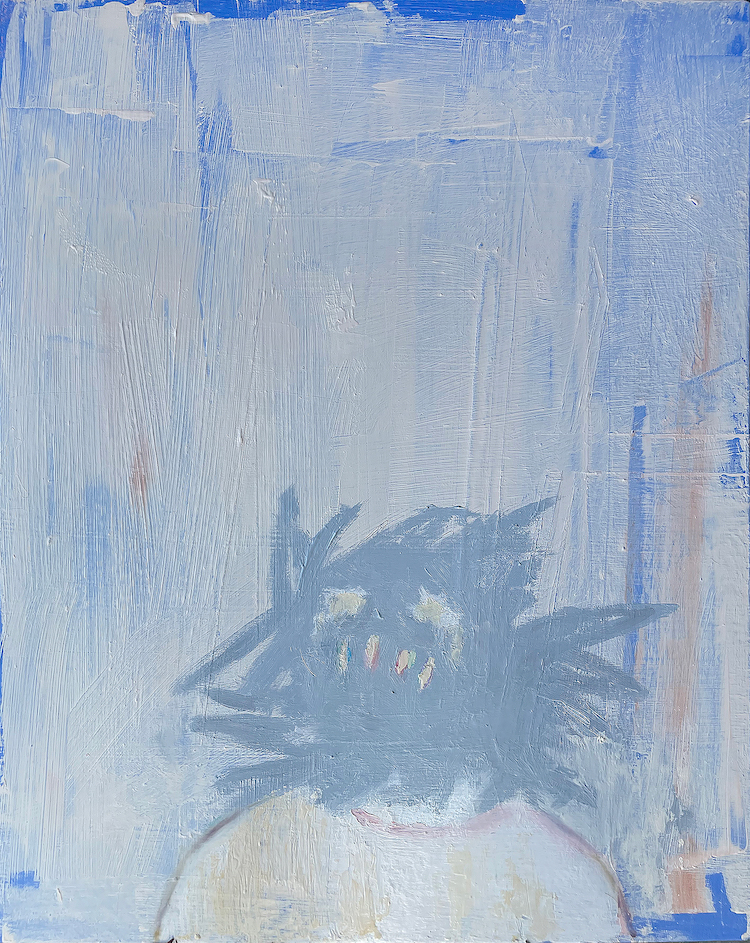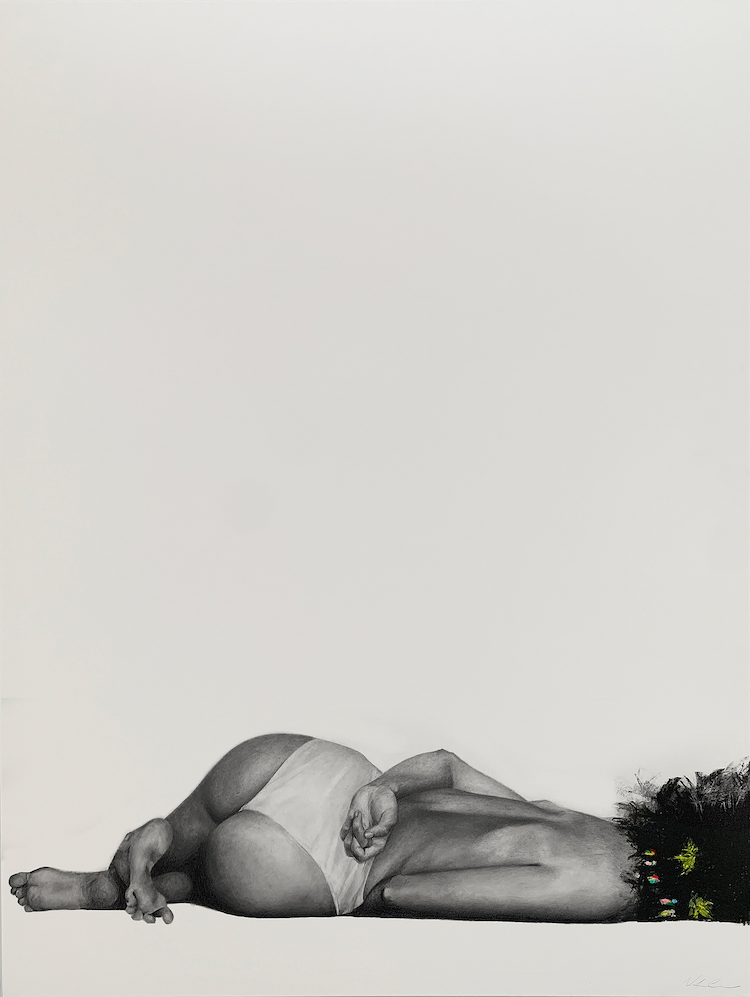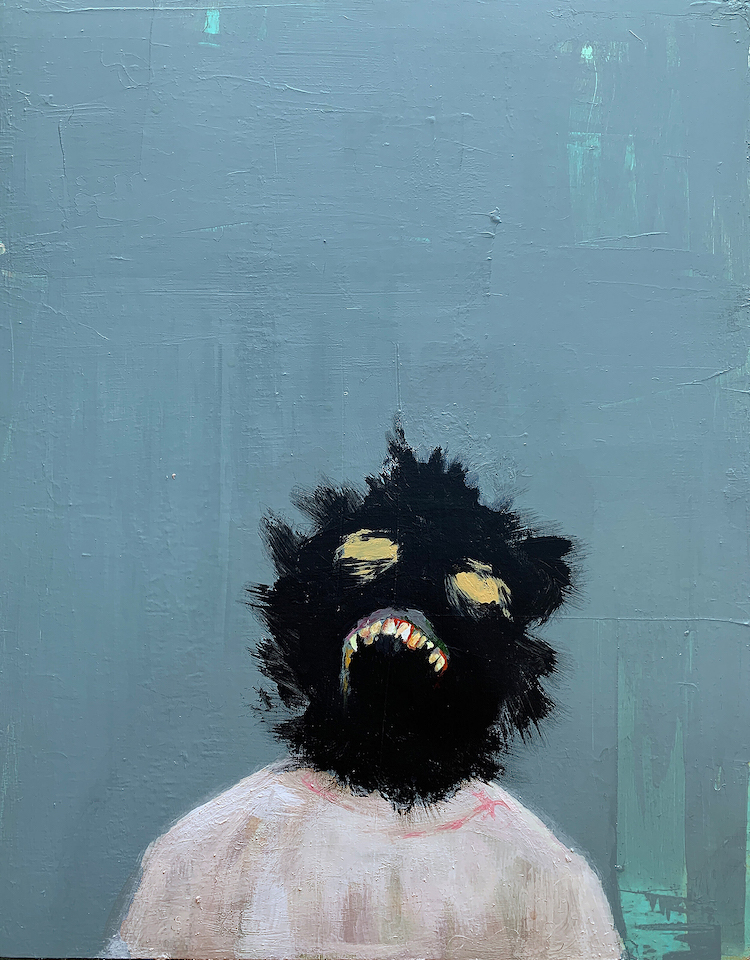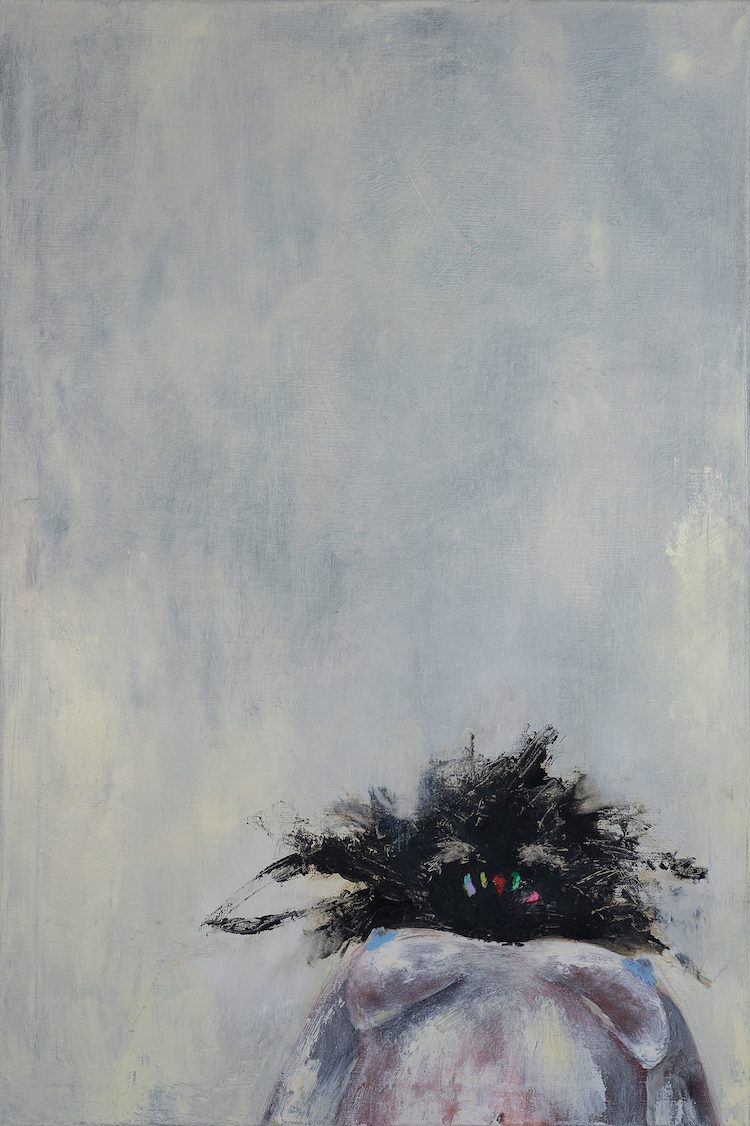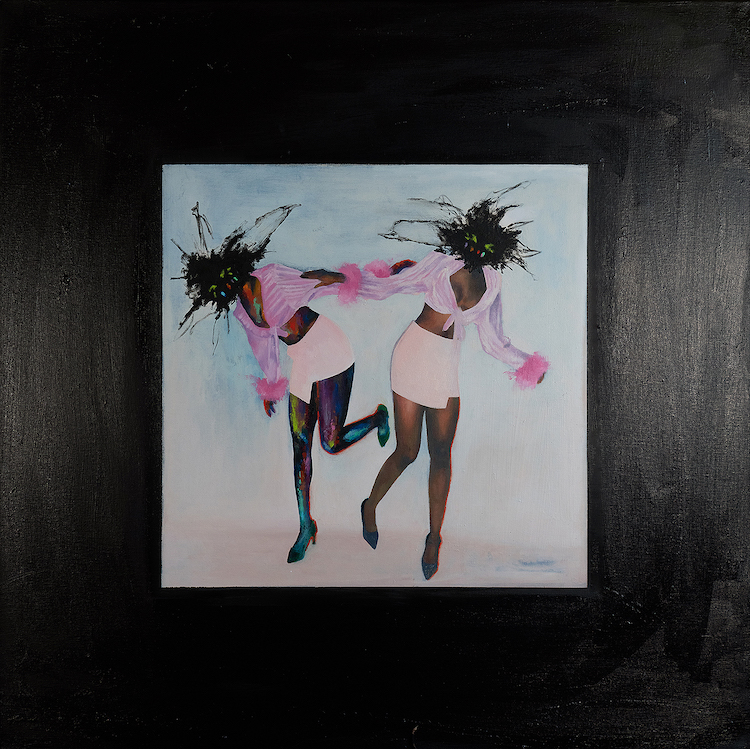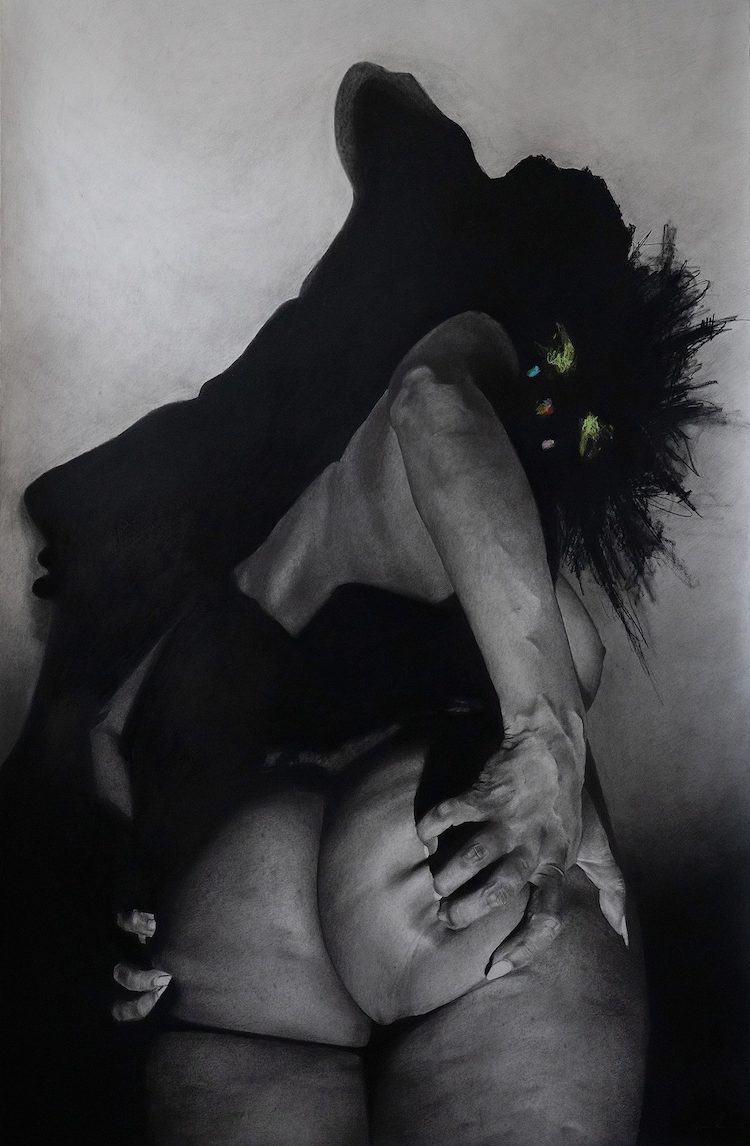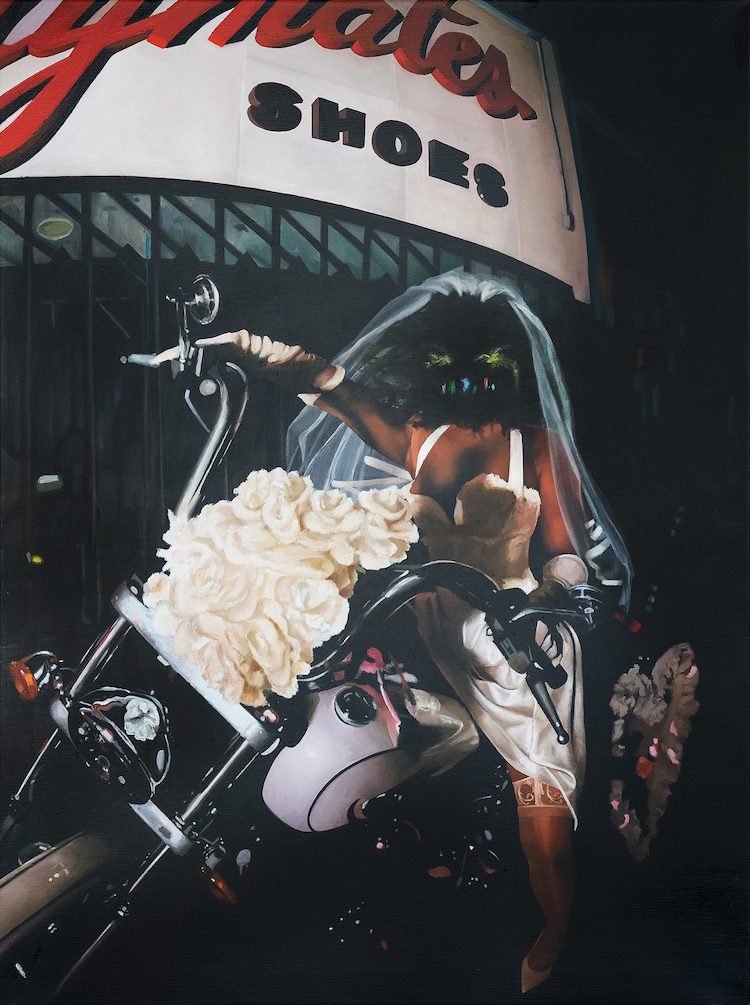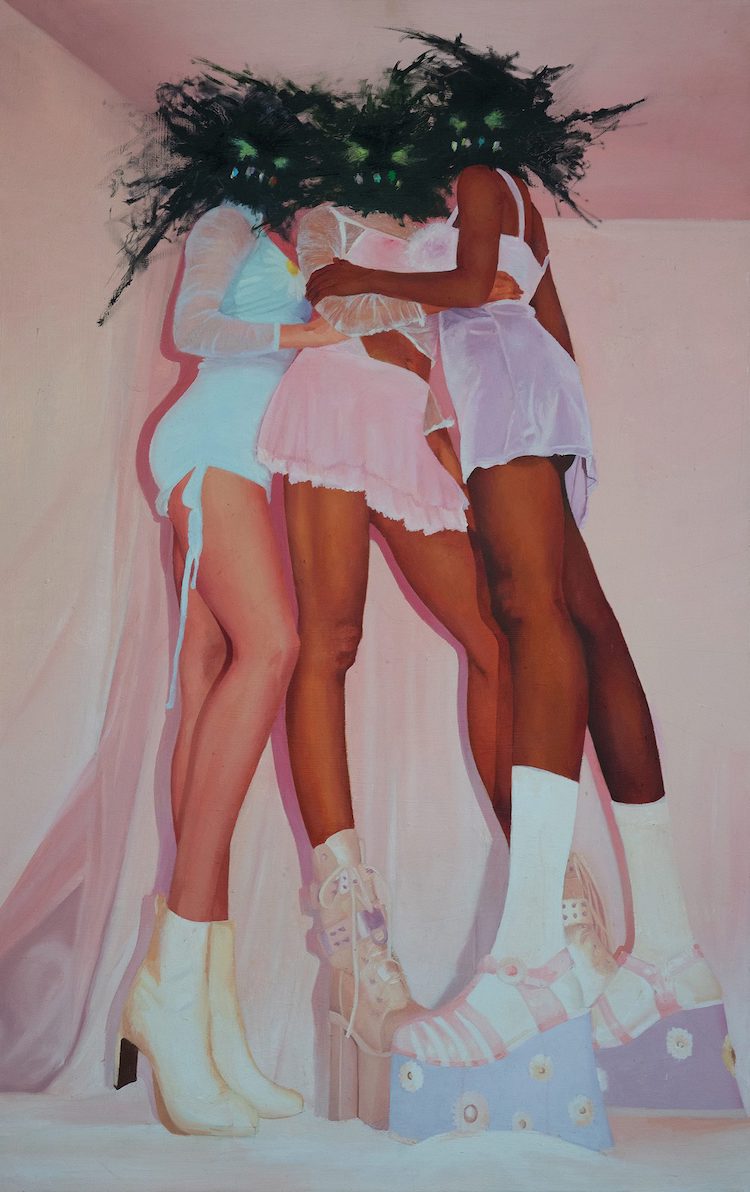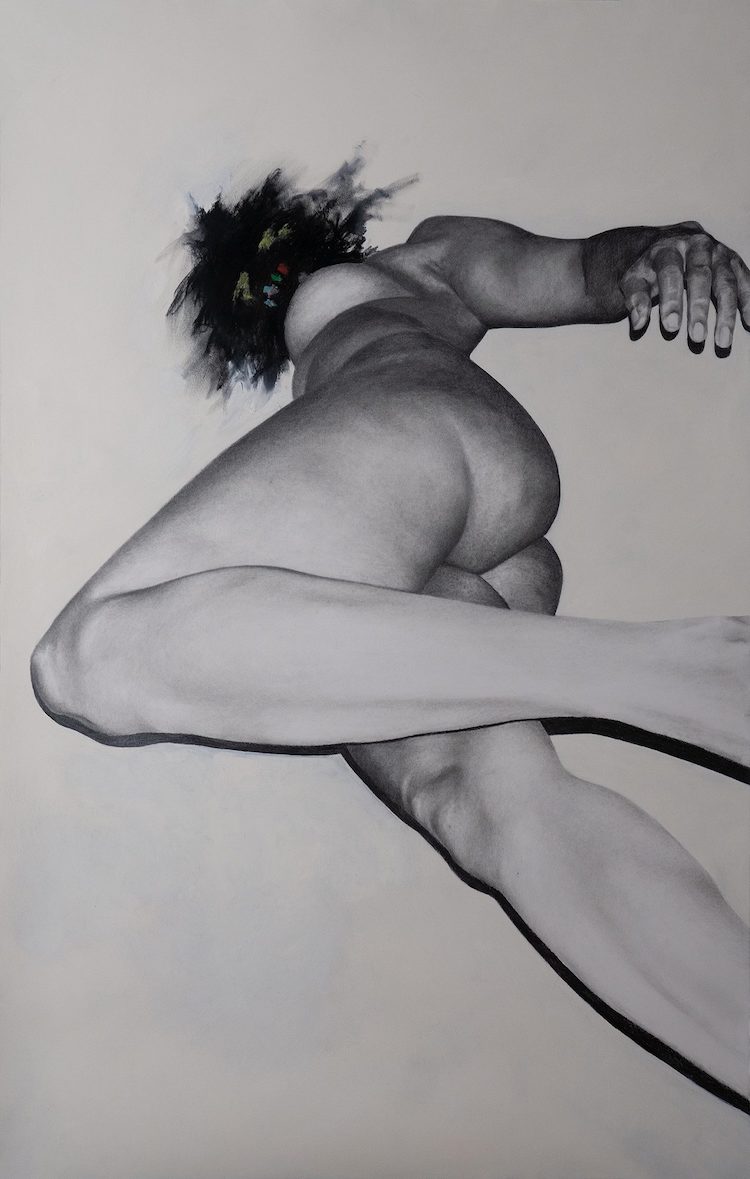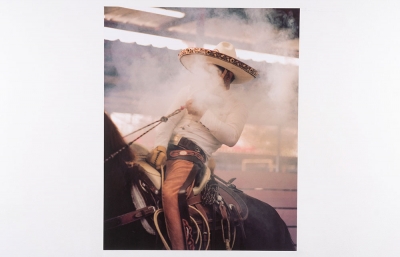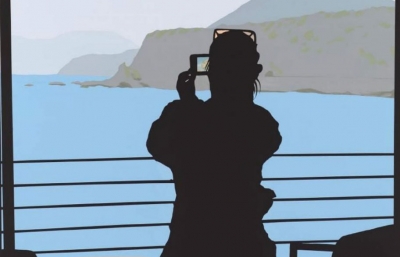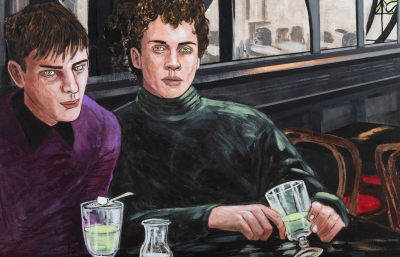Thinkspace Projects is thrilled to present Victoria Cassinova’s first major solo show, Without Ornament. The 28-year-old Cassinova is an LA-based artist and longtime fan of Thinkspace, making this a perfect and cohesive debut.
In ten new works, which range in medium and size, including paint and charcoal, Cassinova creates a harmonious experience. This collection, aptly titled “Without Ornament,” presents a juxtaposition of highly detailed and beautifully engaging bodies, many of which are nude, with monstrous faces. In creating this contrast, Cassinova challenges the gaze of her viewers, ultimately engaging the audience.
As Cassinova herself describes them, “the faces are a personified metaphor for my own human condition. I will personify my own inner demons, not necessarily negative, but I put my mask on and take ownership of my own monsters.” In doing so, Cassinova deepens the narrative of each piece, truly creating a dialogue. “This body of work is essentially my visual diary. It is an exploration of the absence and presence of ornamental feminism within my own life experience, and the world around me.”
Just as there are multiple meanings and contrast within each piece, the title itself is a double entendre. Without Ornament refers to both the stripped down visuals and minimalistic approach, as well as broaching the subject of women as ornaments. Throughout history women have been positioned as ornamental figures, whether it be a bride on her wedding day or young girls on social media in the throes of internet success. With this show, Cassinova examines these positions, going so far as to reposition them and display the inner demons visually as a means to broach the subject of body image and perception.
Careful not to generalize when it comes to delicate subjects, Cassinova is clear that this is her personal interpretation. One that she hopes others will resonate with, but not one she wants to force upon them. “I’m speaking for myself within all of this. I cannot speak for all women.” She goes on to explain the personal benefits of creating this work. “My work is more so a cathartic process. It’s often a conversation between me and me. I feel like I’m in my autobiographical phase as an artist. It’s my healing phase.”

